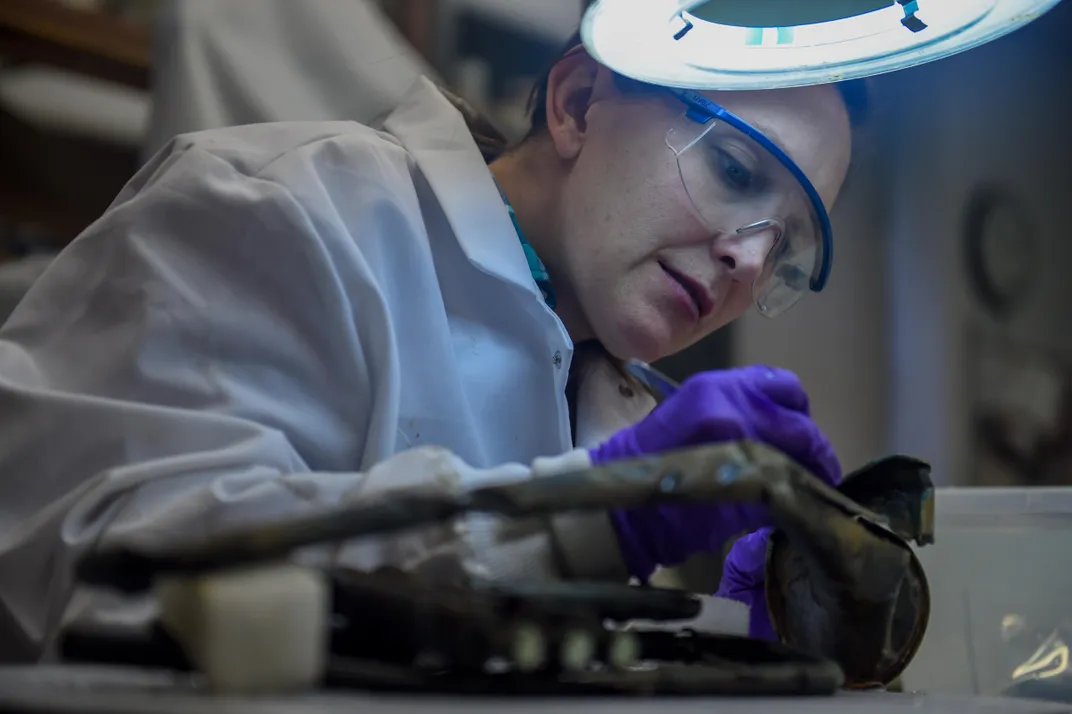A Trumpet Retrieved From a World War II Shipwreck Could Still Hold Its Owner’s DNA
Conservators are trying to identify the sailor who once played it
/https://tf-cmsv2-smithsonianmag-media.s3.amazonaws.com/filer/97/71/9771f532-4644-45a1-8bdd-b47c6a426812/131231-n-zz999-001.jpg)
After almost 75 years, a broken trumpet that saw action aboard one of the United States’ most storied World War II vessels might lead researchers to its owner’s family. According to conservators at the Naval History and Heritage Command (NHHC), while the trumpet sat at the bottom of the Pacific Ocean near Indonesia for decades, the battered brass instrument might still contain traces of the unknown musician’s DNA, Michael E. Ruane reports for the Washington Post.
During World War II, the USS Houston was the pride of the U.S. Navy’s Pacific fleet. Nicknamed the "Galloping Ghost of the Java Coast,” the Houston was President Franklin D. Roosevelt’s favorite in the fleet, and saw significant action throughout the war. But on March 1, 1942, the Houston and another ship, the Australian HMAS Perth, were attacked off of Indonesia’s coast by a Japanese fleet in the middle of the night. Both ships sunk and nearly 700 sailors died, including many members of the ship’s naval band. Hundreds more were taken prisoner by the Japanese and would be held captive for the next three years.
For decades, the battered trumpet rested nearly 100 feet below the ocean’s surface in a pile of bullet casings hidden within the wreckage of the Houston, until an Australian diver exploring the ship noticed it during an expedition in 2013. He took the trumpet, but later, after realizing he had taken it illegally, he reached out to the NHHC’s Underwater Archaeology Branch to apologize and return it, Ruane writes.
Since retrieving the trumpet, conservators at the NHHC have kept the battered instrument in a bath of deionized water in order to draw out corrosive salts that were oxidizing the trumpet. But while conservators have uncovered the trumpet’s serial number and traced it back to its manufacturer in Elkhart, Indiana, the NHHC is still hopeful that they might be able to identify who the trumpet's rightful owner was.
When the Houston sank, there were four sailors who played trumpet for the ship’s 18-person band. One player was killed in the battle that sunk the ship, and although the other three survived as prisoners of war, they have since died. However, experts believe there is still a slim chance that they can identify which of the four musicians the trumpet belonged to, as the instrument could still hold remnants of DNA leftover from when its owner had last taken it apart for cleaning.
“It’s amazing the human story one artifact can relate,” Robert Neyland, director of the NHHC’s underwater branch told Matthew M. Burke for Stars and Stripes in 2014. “It’s more than a trumpet. It tells a story of an event, of the individuals, the heroism, the tragedy and the sense of endurance.”
